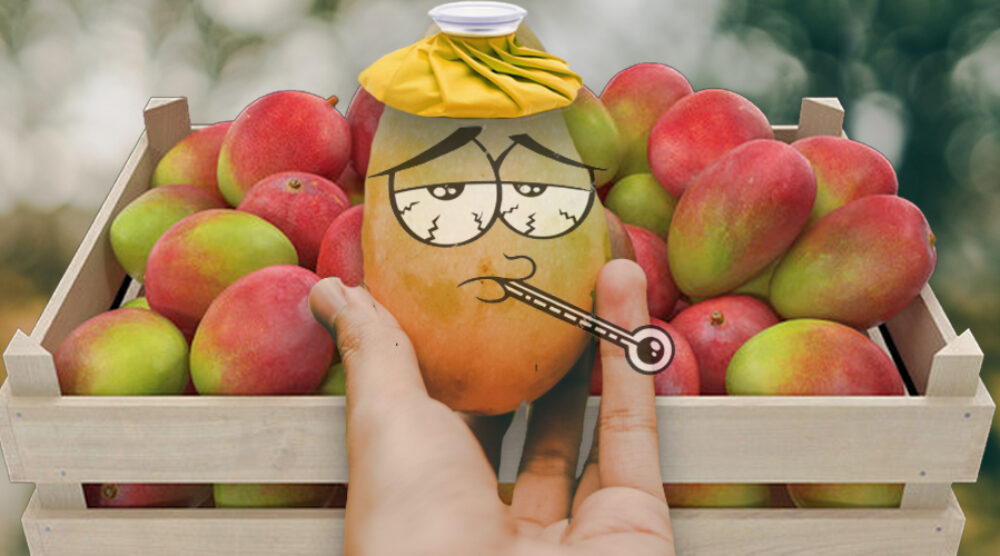Coming back as a mature age PhD student almost 20 years after finishing an Honours degree has been challenging, but rewarding. My research journey has had several ups and downs, including mum’s dementia diagnoses, hubby’s cancer fight, my own cancer scare, and now to top it off—a pandemic. Throughout this bumpy journey, the two constants that have kept me going have been my supervisors, Dr Louis Sanzogni, Dr Kuldeep (Sandy) Sandhu and Professor Daryl Joyce and my research topic. They laugh and, metaphorically, cry with me. My supervisors believe in me and, most importantly, they believe that my research topic is significant for Australian horticulture.

I have worked with the Queensland and Australian governments for over 15 years supporting horticulture exports. During that time, I found that the quality of our fresh produce once it reached the overseas market, at times did not meet the customers’ expectations. As a result, international buyers were disappointed, markets were lost and, despite governments’ trade development efforts, horticulture exports have not grown as much as expected. Contrary to our parochial belief that Australian produce is top quality that is not always the case. We cannot longer rely on an unsubstantiated “green and clean” image to market our products overseas. If Australian horticulture is to succeed internationally, then quality needs to improve.
This lack of quality is not only found in the export markets, but it is also common in the domestic market. Figures by the Australian Federal government suggest that close to $3 billion of horticulture produce is lost to farmers. Even worse, between 20-40 per cent of all fresh produce is rejected before it reaches the stores. Worldwide, the United Nations estimated that around one-third of all food produced is lost. Most of the losses are in horticulture and are linked to poor cold chain practices.
The Queensland Department of Agriculture and Fisheries and other state agriculture departments have invested in a great deal of research and development to demonstrate the best cold chain management and post-harvest handling practices. The research has shown that ensuring an optimal range of temperature is one of the most important factors in maintaining produce quality. However, although technologies have been developed to monitor temperature, uptake of such technologies is very low. Little is known about the reasons behind this low uptake, with even less research into factors affecting adoption along supply chains in horticulture industries. My PhD research attempts to bridge the gap by determining what factors influence and/or dissuade the adoption of digital monitoring technologies in Australian horticulture. Using the mango industry and its experience with adoption of temperature monitoring dataloggers, my research sought to understand the factors affecting the uptake of post-harvest technologies in horticulture to assist Australian governments, industry associations, and technology developers to design and implement technologies that are more likely to be adopted by horticulture industries.
Why mangoes? Well, mangoes are the quintessential Australian summer fruit and the industry is important for employment in regional Queensland. In 2019, Australian mango production was estimated to be 74,920 tonnes, valued at $198.6 million, with exports valued at $30.7 million. Production is heavily influenced by seasonality and variety, with most production taking part during only a few weeks per region. Mangoes are climacteric fruits that are picked from the tree at a hard green mature stage and then ripen after harvest to reach the desired maturity, making them highly susceptible to temperature variations. Furthermore, as mangoes have limited shelf-life when kept at ambient temperature, management of temperature after harvest is fundamental. Due to their perishability, mangoes require an uninterrupted cold chain to avoid product loss and food safety problems. If the temperature is not well managed as mangoes move from farms to stores, many things can go wrong. By using temperature monitoring dataloggers, the mango industry can better manage the cold chain and avoid produce getting damaged.
So what are the takeaway messages from my research? Temperature mismanagement along the mango supply chain is prevalent, and temperature monitoring is a low priority in the industry. Furthermore, my research found five key beliefs, driving attitude and eventually adoption of temperature monitoring dataloggers:
- Technologies currently in the market are difficult to use in supply chains.
- As mangoes are harvested unripe, most in the supply chain do not see the damage until it reaches consumers.
- There is mistrust in the supply chain, so information is not shared.
- The cost of the technology does not justify the investment.
- There is no social acceptance that looking after the cold chain is good for all.
These findings provided valuable insights into factors that influence the adoption of temperature management technologies in the mango industry, and the adoption of post-harvest technologies in Australian horticulture industry in general.
My PhD journey has been grueling with many hurdles, but I know my research is contributing to practice change in the industry, and that is very rewarding. I am truly grateful to my supervisors for their ongoing support. If only that thesis would write itself!
Edith Gomez is a PhD candidate in the Department of Business Strategy and Innovation.





